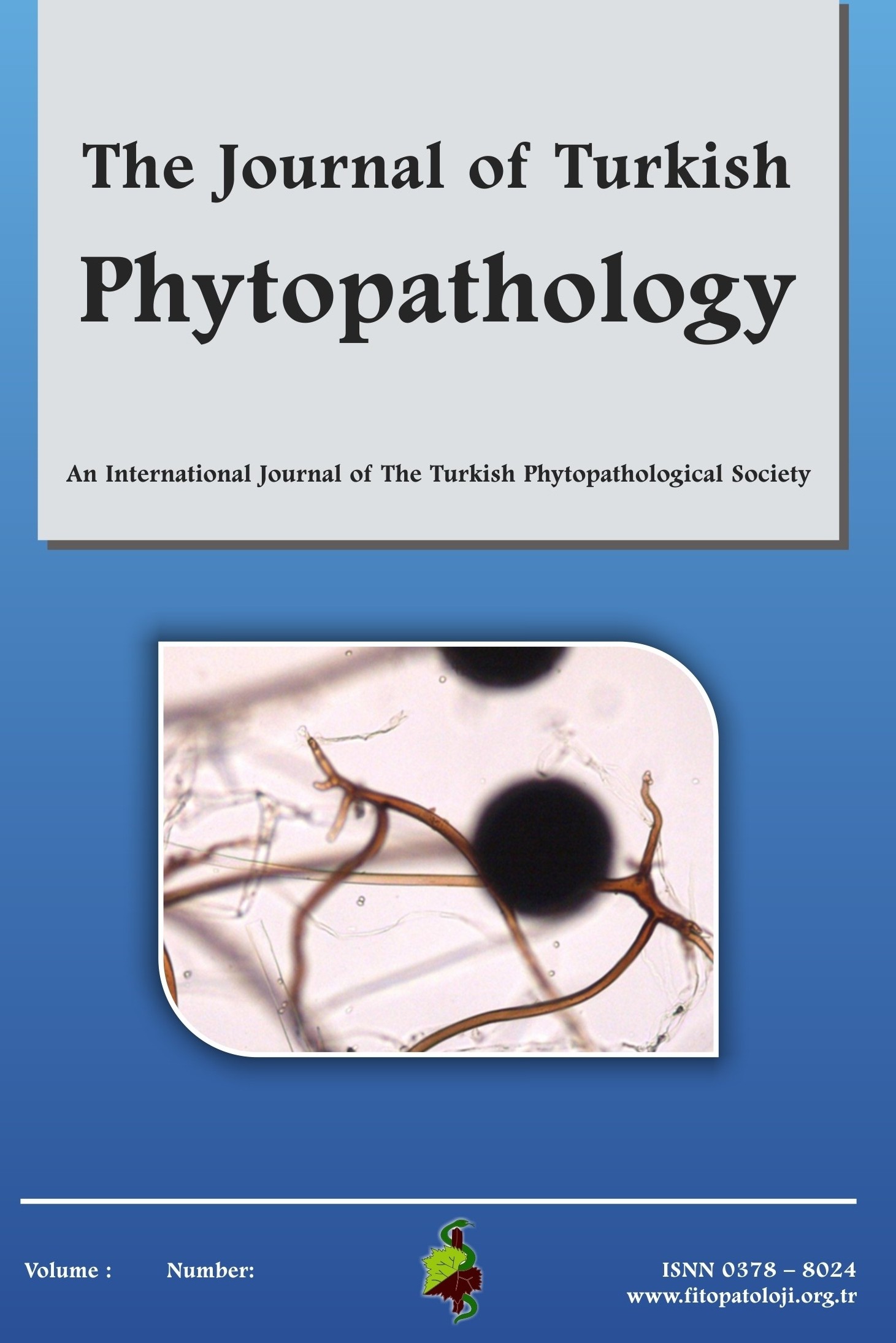Yerfıstığı ve Biberde Gövde Çürüklüğü (Sclerotium Rolfsii Sacc.) Hastalığına Karşı Bazı Bitki Materyalleri ve Abiyotik Uyarıcıların Etkilerinin Araştırılması
-
Anahtar Kelimeler:
-
Effects of Some Plant Activators and Plant Materials on Stem Rot Disease of Peanut and Pepper Caused by Sclerotium rolfsii
In this study, a total of 206 bacterial strains belonged to 62 different species in 35 genera were isolated from aerial parts of pome fruits. All bacterial strains were tested for antagonistic activity in in-vitro and in-vivo assays against Pseudomonas syringae pv. syringae causing leaf or tip necrosis on pome fruits. Only 71 of the strains tested were determined with antagonistic activity against the pathogen in in-vitro test. Twenty two of these strains were selected as potential antagonist due to their hyperparasitic activity or size of inhibition zone (50 mm or above) calculated in-vitro Petri assay. The preselected strains were further tested against the pathogen alone and/or in six different combinations using one year old Golden delicious apples shoots in-vivo conditions. The results showed that antagonistic bacterial strains tested significantly reduced diseases development caused by the pathogen. However, the best results were obtained from 4 strains of Pantoea agglomerans (RK 84, 85, 113 and 154), and a strain of Leclercia adecarboxylata (RK 164), Pseudomonas putida (RK 142), Curtobacterium flaccumfaciens (RK 114), Erwinia rhapontici (RK 135), Alcaligenes piechaudii (RK 137), Serratia liquefaciens (RK 102) and their combinations. All bacterial strains were also characterized based on sole carbon source utilization profiles using Microplate assay (BIOLOG, Hayward, CA). The data suggested that there was a correlation in the nutritional profile of pathogen and its biocontrol strains. Therefore, this is the first study providing evidence that nutritional similarity between Pseudomonas syringae pv. syringae and its biocontrol agents may be one of the important factors need to be determined for effective disease management programs
Keywords:
Antibiosis, biocontrol, BIOLOG, competition, leaf necrosis, pomes fruit Pseudomonas syringae pv. syringae,
- ISSN: 0378-8024
- Yayın Aralığı: Yılda 3 Sayı
- Başlangıç: 1971
- Yayıncı: Türkiye Fitopatoloji Derneği
